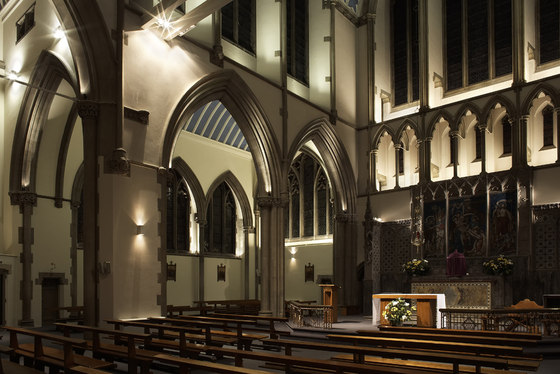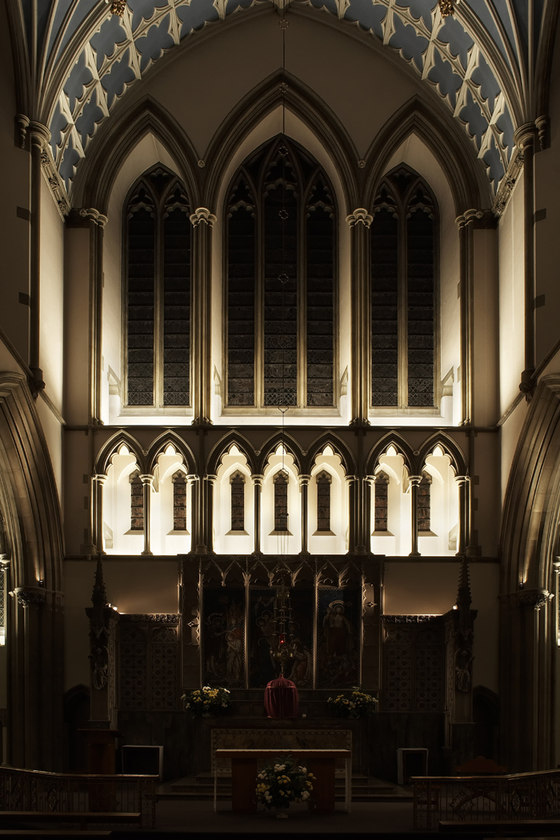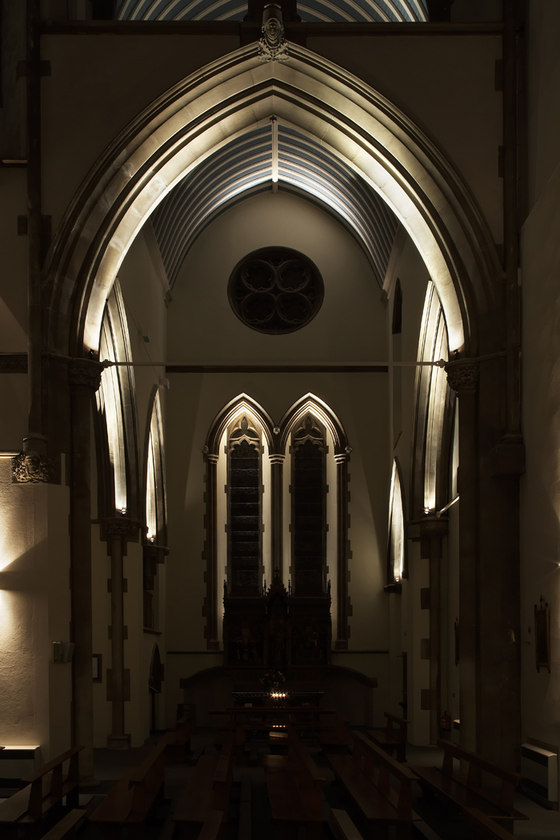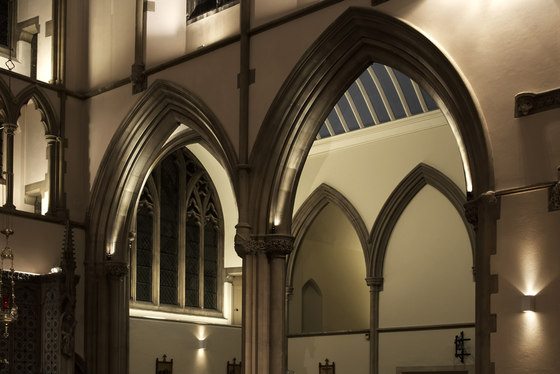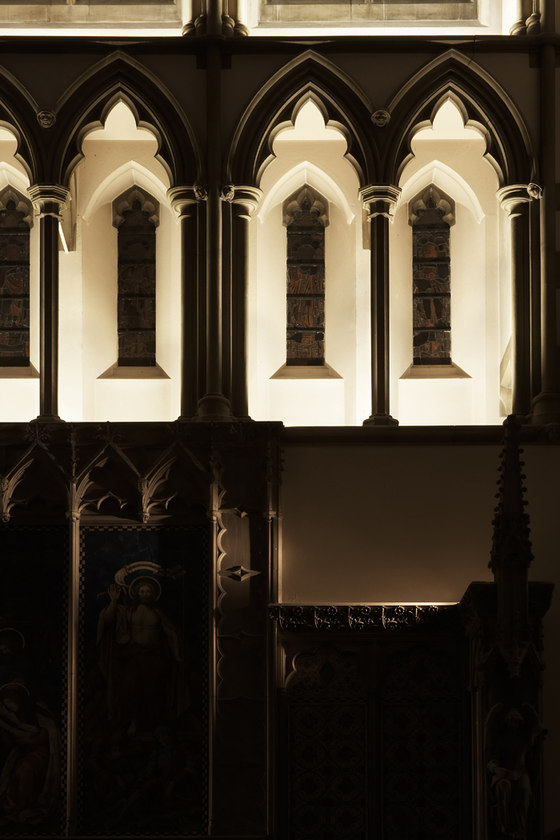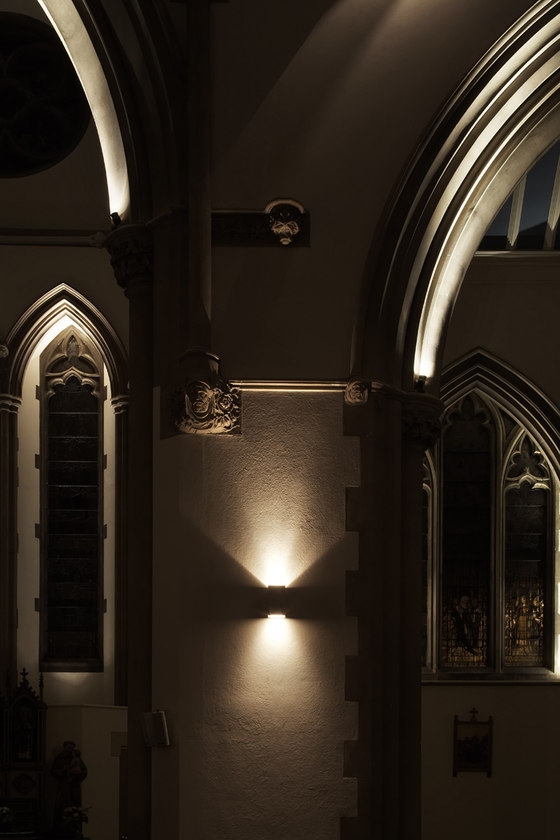The atomic bomb (a plutonium-239 device) that was dropped on Nagasaki exploded over the city at 11:02 A.M. on August 9, 1945. This memorial hall was constructed as a site for commemorating the victims of the bombing and preserving accounts of atomic bomb experience for future generations. While the facility has been built entirely underground, the design of the aboveground entrance area features a monumental water basin 29 meters in diameter. Inlaid into the black granite submerged in the basin are 70,000 light fibers, representing the number of people who died from the bomb's effects.
For the approach staircase, LPA used ambient, indirect lighting built into the handrail to guide the eye from the aboveground entrance into the underground area, with narrow, warm-white fluorescent lamps as the light source. We decided we needed to have mainly gentle, warm-white ambient light for the walkways. For areas requiring more functional lighting, we used glareless downlight, making every effort to eliminate glare from the normal field of vision.
Although the Remembrance Hall, the facility's main area, is located underground to ensure a mood of serenity, from the light from its skylight one can sense the passing of clouds and even the slow movement of the sun in the sky above. Augmenting the natural lighting effects in this area are 12 pillars of light, each of them one meter square in girth and fitted with a 9-meter-high light pipe. The light pipes are lit by stark white metal halide lamps to create a symbolic contrast with the warm lighting of the surrounding space. The day-night inversion - from natural light flowing into the Remembrance Hall during the day, to the illuminated walls stretching up into the outdoor water basin at night - characterizes the straightforward overall concept behind the lighting design for this building.
In the Remembrance Hall, considerations of brightness or functionality were far outweighed by the need for a quality of light soothing to those who come here to pray for peace - a healing kind of light, one might say. This had to be a tranquil, sacred place, yet one with a visual impact that remains vivid in the memory long after one has left.
When visiting the facility at dusk, the first thing one encounters is the host of 70,000 points of light shimmering in the huge water basin at the entrance. The light fiber tips peer out from tiny holes made at 87 mm intervals in the underwater stone, their tiny points of light wavering in ever-changing patterns through the rippling surface of the water. With the help of nature in the form of wind and water, this 1/f fluctuation effect sublimates the artificial light of light fibers into a soothing, healing kind of light. The effect of these myriad points of light is also enhanced by the stark white illuminated walls rising up at the rear. These walls of light are constructed with giant light pipes that reach up from the underground Remembrance Hall.
The task of installing 70,000 light fibers into black granite in straight lines was not as easy as the design team had expected. LPA had to hand-bore 1-mm-diameter holes for the fibers in perfectly straight lines and at precise intervals - if a hole was even slightly out of alignment, it stood out conspicuously. They conducted various mock up tests with water tanks to determine how close the lights could be to the water surface. After the completion of construction, they found that small bits of dirt and scum in the water would sometimes cover over some of the tiny light fiber tips. Nonetheless, the effect of the light in the basin is beautiful, particularly when the wind sends ripples across the water surface.
Dow Jones Architects
